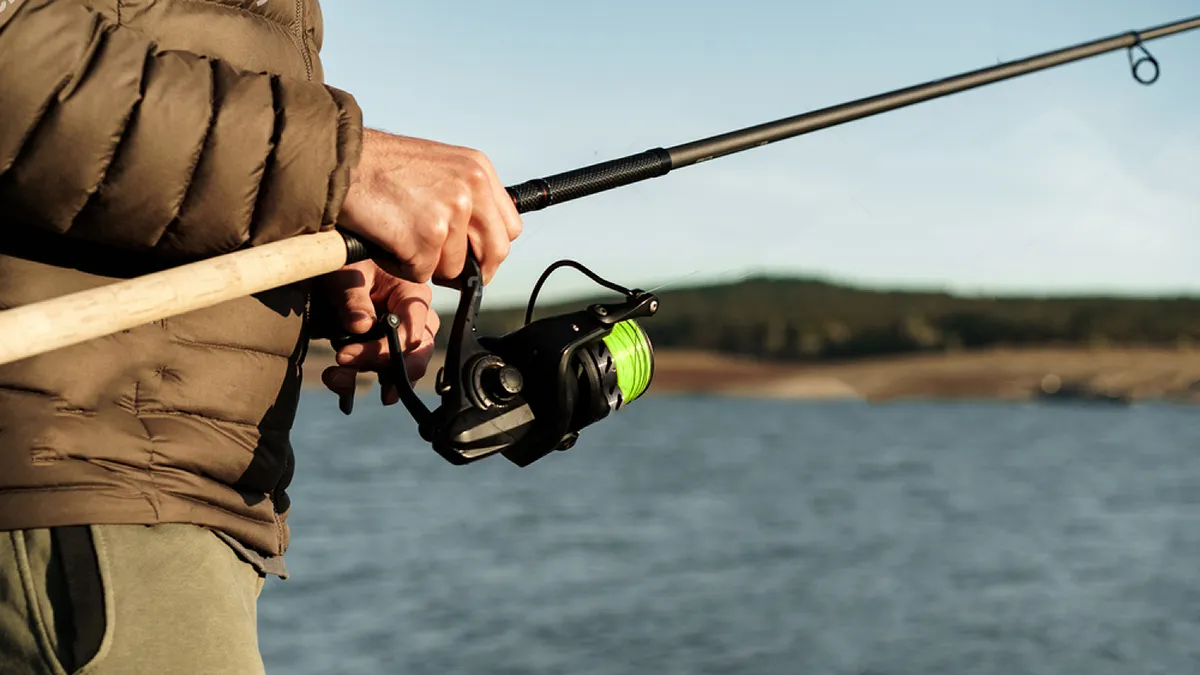Hey fishing mates! Choosing the right fishing line can be tricky, with options like durable braided lines and stealthy fluorocarbon. Each type offers unique benefits for your fishing style. And if you’re puzzled about why your line isn’t reeling in smoothly, we’re here to tackle that too. For top-quality lines, check out ReelBoss’s fantastic range. Let’s dive into the world of fishing line types and unravel these mysteries together. Time to reel in the fun!
Exploring Different Fishing Line Types
So, you’re all set to tackle the waters, but hang on a sec – have you ever paused to think, “What fishing line to use?” Let’s break it down, mate!
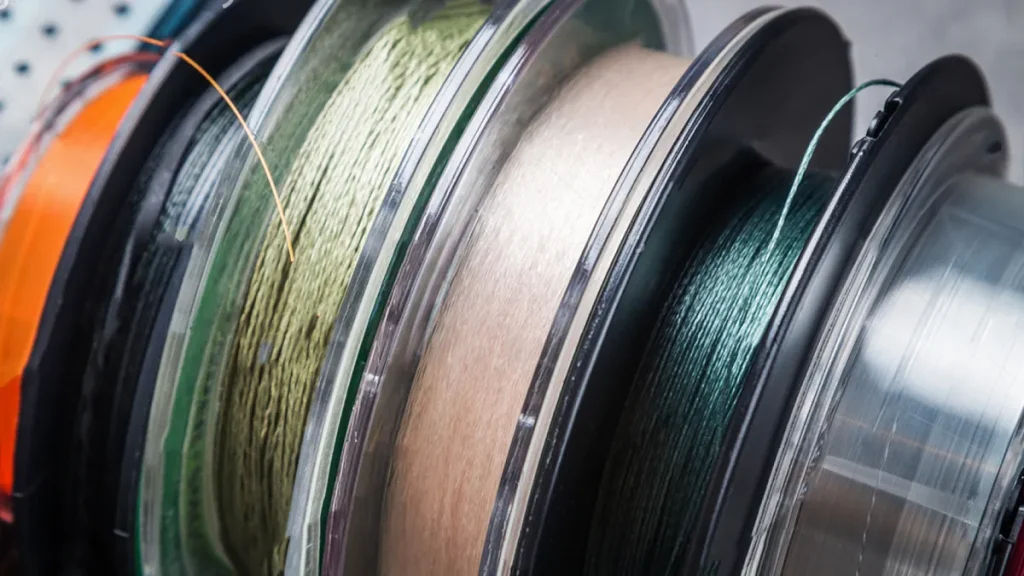
Monofilament Lines
Monofilament lines are like the good ol’ mates in the world of fishing. They’re versatile, affordable, and have that just-right stretch for a smooth fishing experience. Ideal for beginners? Absolutely! They’re forgiving, easy to knot, and work like a charm in various scenarios, from riverbank fishing to offshore adventures. Plus, they come in a range of colors to blend in with different water conditions.
Braided Lines
Now, let’s talk about the muscle of the group – braided lines. These fellas are tough, with amazing strength and almost zero stretch. Heading into areas with heavy cover or targeting those big, stubborn fish? Braided lines are your best bet. They offer great sensitivity – you’ll feel even the slightest nibble! And guess what? They last longer too, making them a savvy choice for seasoned anglers.
Fluorocarbon Lines
Last up, we’ve got the stealthy ones – fluorocarbon lines. Their superpower? They’re nearly invisible underwater! Perfect for clear water fishing where you need to be a bit sneaky. Plus, they’re resistant to abrasions and UV light, making them a durable option. They sink faster too, ideal for getting those lures down deep.
Now that you’ve got the lowdown on the types of fishing lines, you’re probably wondering about the tricky bit – why do these lines sometimes give us a headache by not reeling in properly? Stay tuned, as we’re about to dive into the common reeling-in problems and their causes in our next section. Get ready to unravel these mysteries and become a reel pro!
Common Reeling-In Problems and Their Causes
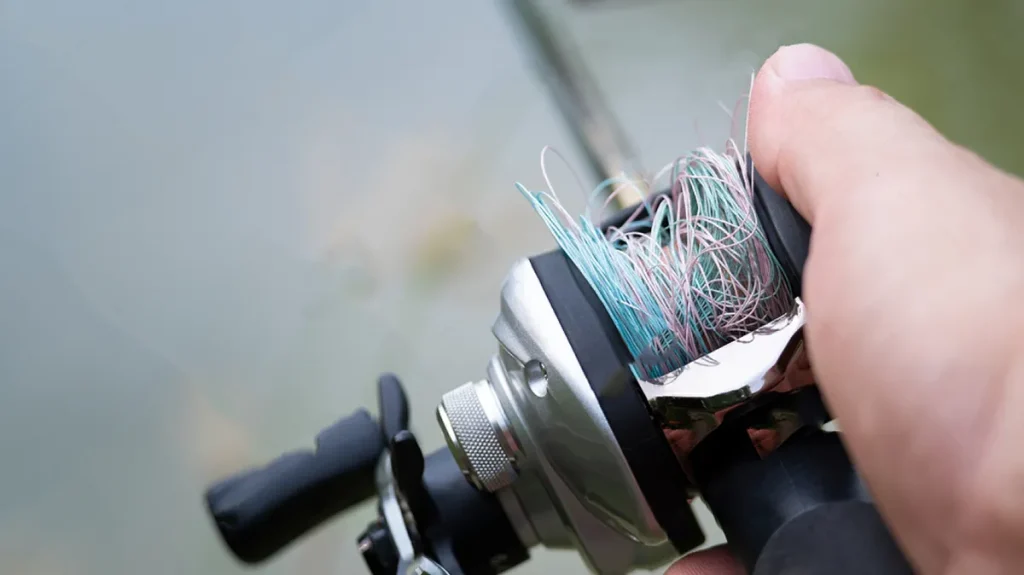
Alright, let’s dive into some of the niggly bits of fishing – those annoying reeling-in problems. Why do they happen? Let’s get to the bottom of this.
Line Twisting
Line twisting – it’s a real pain, isn’t it? This troublemaker can depend on the type of line you’re using. Monofilament lines, while user-friendly, can get twisted if not reeled incorrectly or if your lure spins a lot. Braided lines are less prone to twisting but aren’t immune. And fluorocarbon, well, it sits somewhere in the middle. Keeping your line straight is key to avoiding tangles and knots.
Incorrect Spooling
This is where a good fishing line spooler comes in handy. Each line type needs a bit of a different touch when spooling. Braided lines need a tighter spool to avoid slippage, while monofilament and fluorocarbon can be a bit more forgiving. However, spool them too loose, and you’re asking for trouble. A proper spooling technique keeps your line in top form and ready to cast.
Wear and Tear
Every line type has its breaking point – literally. Monofilament lines can weaken with prolonged exposure to sunlight. Braided lines are tough, but they can fray over time, especially when rubbing against rocks or debris. Fluorocarbon, though resistant to wear, can get nicks and cuts from underwater hazards. Regular checks and proper care will extend the life of your line.
So now that we’ve tackled these common issues, you might be wondering how to match your line to your fishing style. In our next section, we’ll cover just that – choosing the right line for your specific fishing adventures. Stay hooked!
Matching Your Line to Your Fishing Style
Finding the right line for your fishing style is like choosing the perfect lure – it’s all about what works for you.
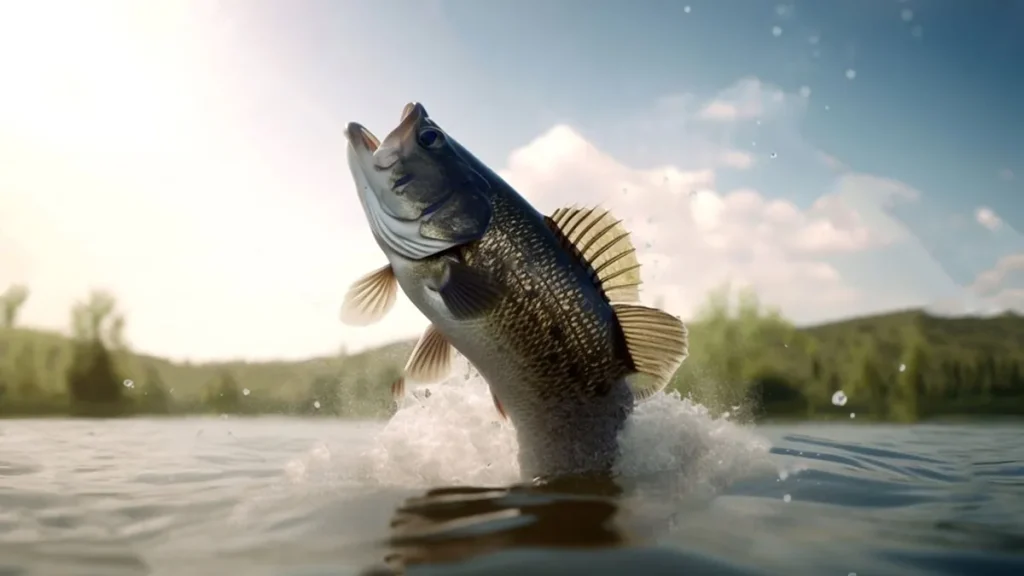
Best Lines for Beginners
If you’re new to the angling game, starting simple is the way to go. Monofilament lines are your best bet. They’re easy to handle, forgiving with knots, and won’t break the bank. Plus, they’re versatile for various fishing techniques. A good fishing line spooler can make setting up your reel a breeze, ensuring the line is evenly and properly loaded.
Line Choices for Advanced Techniques
For seasoned anglers aiming for precision and efficiency, fluorocarbon lines are a stellar choice. They’re nearly invisible underwater, perfect for clear waters and wary fish. Braided lines are another excellent option, offering strength and sensitivity for those tough catches. Remember, using a reliable fishing line spooler can make all the difference in handling these more specialized lines.
Up next, we’ll dive into the nitty-gritty of maintenance – keeping different line types in tip-top shape.
Maintenance Tips for Different Line Types
Keeping your fishing lines in good nick is crucial for that next big catch. Let’s dive into how to keep them in top shape!
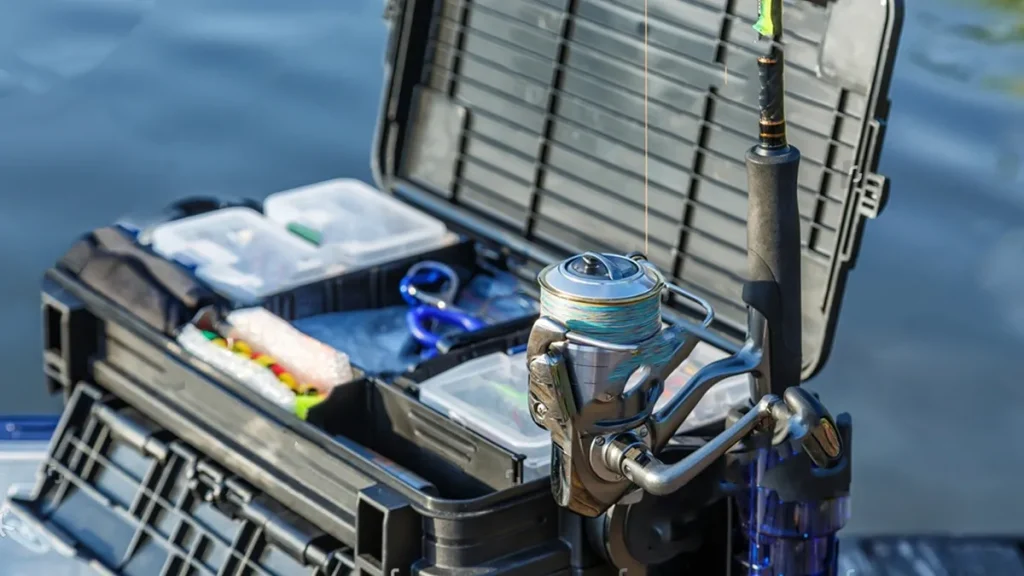
Caring for Monofilament
Monofilament lines are pretty low maintenance, but they love a bit of care. Rinse them in fresh water after each use, especially if you’ve been fishing in saltwater. Store them away from direct sunlight to prevent weakening. And remember, replacing your mono line every season is a good rule of thumb to avoid surprises on your next outing.
Keeping Braided Lines in Top Shape
Braided lines are tough, but they still need love. The key? Keep an eye out for frays and wear. Regularly check the line’s condition, especially if you’ve been fishing around abrasive surfaces. And when spooling, tension is vital – a good fishing line spooler can ensure it’s done just right.
Preserving Fluorocarbon Lines
Fluorocarbon lines are all about stealth and strength, but they can get nicks and cuts from underwater hazards. Regular inspection is key. Like mono lines, keep them out of the sun when not in use. Also, fluorocarbon lines benefit from a good spooler for even and tight winding.
With these tips, your lines are set to last longer and perform better, ensuring you’re always ready for that next big adventure on the water!
Conclusion
And there you have it, folks – a complete guide to keeping your fishing lines, whether they’re monofilament, braided, or fluorocarbon, in tip-top shape. Remember, a well-maintained line means fewer snags, less wear and tear, and yes, fewer frustrating fishing line knots. Speaking of knots, mastering a few reliable ones can make all the difference in securing your catch.
Now, if you’re looking to upgrade your gear or need some new lines that can handle the best knots in the business, don’t forget to check out ReelBoss. They’ve got a fantastic selection that’ll suit any fishing style and condition. Head over to ReelBoss and get equipped for your next fishing adventure. Thanks for joining us on this journey, and here’s to many successful, knot-free days out on the water! Happy fishing, mates!
